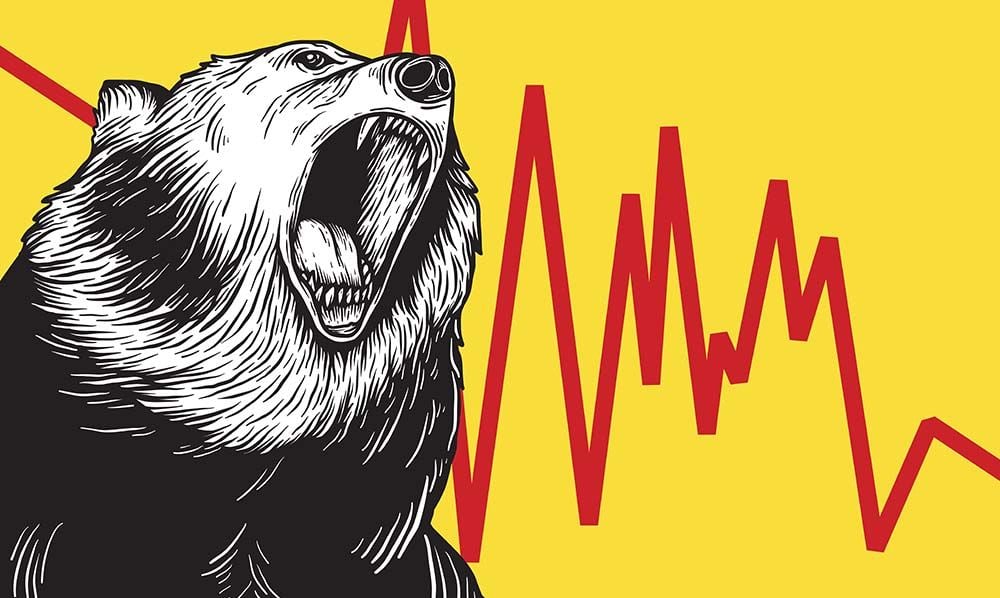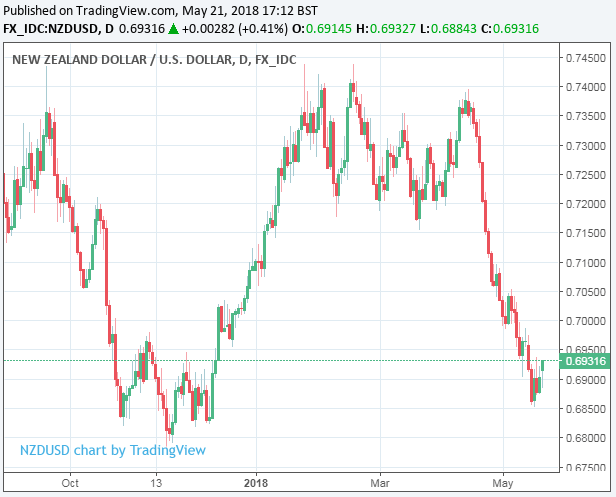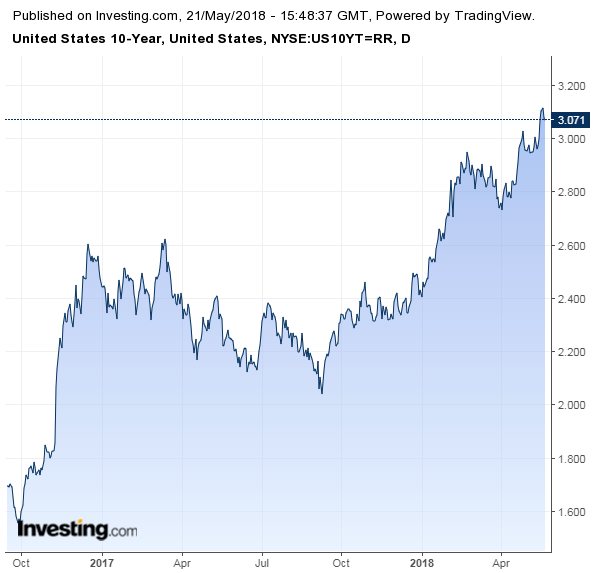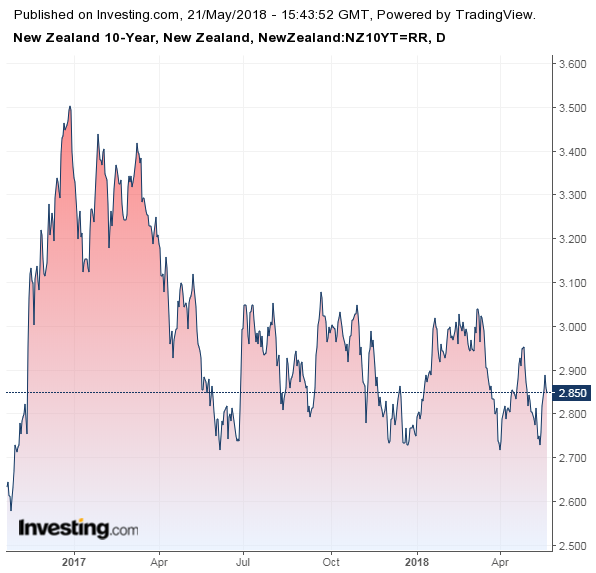Any New Zealand Dollar Strength Forecast to be Short-Lived by Rabobank
- Written by: James Skinner
- NZD rises as US-China detente soothes markets, boosts risk assets.
- Rabobank say rate differential means gains to be short-lived.
- Forecasts 3% downside for NZD/USD, 10% upside for GBP/NZD.

© Rawpixel.com, Adobe Images
The New Zealand Dollar rose at the start of the new week as markets responded to an easing of tensions between the US and China, following a trade-war-related detente at the weekend, although the latest forecasts from Netherlands-based Rabobank suggest it might not be long before the Kiwi currency resumes its downtrend.
US Treasury Secretary Steven Mnuchin told Fox News at the weekend the US and China have agreed to put the so called trade war between them on hold for the time being, meaning the various sets of trade tariffs announced in March will now not come into effect, after having reached an agreement designed to reduce the bilateral trade deficit between the two countries.
This has removed a major source of concern over geopolitical risk from the market's agenda, which helped nudge so called risk assets higher on Monday. The New Zealand Dollar and other commodity currencies were no exception to this, with each rising broadly on the session.
However, the primary drivers of the New Zealand Dollar's 2018 weakness remain in place and so the downtrend is expected to resume before long.
"There are some domestic reasons behind the softness in both the AUD and NZD since February. However, a large part of the movement in FX markets recently can be linked to a broad-based reappraisal in the outlook for the USD," says Jane Foley, an FX strategist at RaboResearch, a division of Rabobank. "Having hit our 3 month targets for both AUD/USD and NZD/USD we have lowered our forecasts moderately for both of these currency pairs."

Above: NZD/USD rate shown at daily intervals.
The New Zealand Dollar had seen a strong start to the year when it rose by more than 5% over the US Dollar during the eight weeks to the end of February however, since then, it has handed back all of those gains to trade at a 2.7% year-to-date loss on Monday.
This is because relative short-term interest rates have returned as the dominant driver of currency markets and, while a trigger-happy Federal Reserve in the US is still expected to keep nudging its interest rate higher throughout the rest of 2018, the outlook for Reserve Bank of New Zealand monetary policy has become more progressively more dim during recent months.
After all, New Zealand inflation has remained below the midpoint of the RBNZ 1% to 3% target ever since the final quarters of 2012 and, with household incomes growing at the same lacklustre pace as elsewhere in the developed world, price pressures are not expected to rise above the midpoint of the target until the final quarter of 2020. In fact, Kiwi inflation has averaged just 2.7% ever over the near-two decades since the year 2000.
"While Orr is aiming to strengthen communication with a broader audience, the guidance for the market was candid. Not only do the RBNZ foresee “no rate change for a considerable time”, but it was also announced that “the direction of our next policy move is equally balanced, up or down”. The latter statement marks the RBNZ out as one of the most dovish central banks in the G10," Foley says, speaking of new RBNZ Governor Adrian Orr's maiden interest rate statement on May 06.

Above: Pound-to-New-Zealand-Dollar rate shown at daily intervals.
These trends, the governor's words and the inflation target matter for currency markets because central banks will only raise interest rates in response to inflation that is rising sustainably toward its target or is already above its target, and it is changes in interest rates that are the raison d'être for most moves in exchange rates.
The RBNZ will not be able to raise its own cash rate from its current record low of 1.75% until Kiwi inflation picks up, which could be years away, but it is the current low level of the interest rate that has been behind all of the New Zealand Dollar's weakness so far in 2018.
"In comparison to other G10 central banks, market expectations for Fed policy have been relatively consistent and more hawkish this year. Even though our forecasts regarding inflation developments in the US are on the moderate side of market expectations and our outlook for US yields is tame, interest rate differentials still favour the USD," Foley adds.

Above: US Government Bond Yield.
These domestic economic developments have seen New Zealand's 10 year Treasury yield fall progressively from 3.4% at the beginning of 2017 to just 2.85% Monday, while international economic developments have seen the US 10 year Treasury yield rise to multi-year highs above the 3.1% level this year.

Above: New Zealand Government Bond Yield.
This means that investors are incentivised to sell Kiwi Dollars and to buy the greenback in order to invest in the American bond market rather than vice versa. This is the opposite of how the so called carry trade, which has traditionally propped up the Kiwi relative to its international peers, used to work.
"The Bank estimates that soft prices pressures may be a function of previous low inflation rates impacting price setting decisions and that technological developments and globalised labour markets may also be having an impact. Until there are signs of firmer price rises, the RBNZ is clearly content to steer away from any pre-emptive policy moves," say Foley.
Foley and the Rabobank team forecast the NZD/USD rate will fall steadily over the coming year, dropping from 0.70 Monday to 0.69 in three months time and 0.67 by year end. It then declines to 0.66 in May 2019.
For the Pound-to-Kiwi rate, Foley and the Rabo team forecast Sterling will rise from its 1.94 level Monday to 1.98 in three months and 2.0 before the year is out. It then rises to 2.13 before May 2019.
Advertisement
Get up to 5% more foreign exchange by using a specialist provider to get closer to the real market rate and avoid the gaping spreads charged by your bank when providing currency. Learn more here.




